#Charles IV of Luxembourg
Text
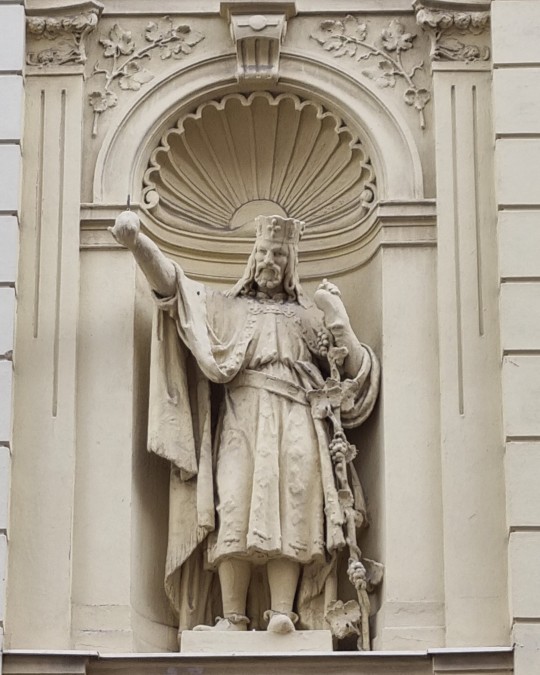

Statue of Charles IV of Luxembourg, on a house designed by the architect Alois Čenský, No. 1155, Mánesova 1, Španělská 8, 120 00 Prague 2 – Vinohrady
Socha Karla IV. Lucemburského na domě navrženém architektem Aloisem Čenským, čp. 1155, Mánesova 1, Španělská 8, 120 00 Praha 2 – Vinohrady
Statue von Karl IV. aus dem Haus der Luxemburger auf einem vom Architekten Alois Čensky entworfenen Gebäude, Nr. 1155, Mánesova 1, Španělská 8, 12 000 Prag 2 – Königliche Weingärten
Статуя Карла IV. Люксембургского на доме по проекту архитектора Алоиса Ченского, № 1155, Mánesova 1, Španělská 8, 120 00 Прага 2 – Винограды
Statue de Charles IV. du Luxembourg sur la maison conçue par l'architecte Alois Čenský, n° 1155, Mánesova 1, Španělská 8, 120 00 Prague 2 – Vinohrady
#Statue#Charles IV#Luxembourg#Alois Čenský#čp. 1155#Mánesova#Španělská#Praha#Vinohrady#socha#Karel IV.#Karl IV.#cтатуя#Карл IV Люксембургский#Алоис Ченский#Винограды#statue#Prague#Prag#Прага#Prága#Czech Republic#Czechia#Tschechien#République tchèque#Tchéquie#Чехия#Чешская Республика#Tschechische Republik
1 note
·
View note
Text
Wives and Daughters of Holy Roman Emperors: Age at First Marriage
I have only included women whose birth dates and dates of marriage are known within at least 1-2 years, therefore, this is not a comprehensive list.
This list does not include women who died before their husbands were crowned Emperor. It spans between the beginning of the reign of Otto I (962 CE) and the end of the reign of Francis II (1806 CE).
The average age at first marriage among these women was 17. The sample size was 91 women. The youngest bride, Bianca Maria Sforza, was just 2 years old when she wed her first husband, who was himself 9. The oldest bride, Constance of Sicily, was 32 years old.
Adelaide of Italy, wife of Otto I, HRE: age 15 when she married Lothair II, King of Italy, in 947 CE
Liutgarde of Saxony, daughter of Otto I, HRE: age 15 when she married Conrad the Red, Duke of Lorraine, in 947 CE
Theophanu, wife of Otto II, HRE: age 17 when she married Otto in 972 CE
Cunigunde of Luxembourg, wife of Henry II, HRE: age 24 when she married Henry in 999 CE
Gisela of Swabia, wife of Conrad II, HRE: age 12 when she married Brun I of Brunswick in 1002 CE
Agnes of Poitou, wife of Henry III, HRE: age 18 when she married Henry in 1043 CE
Matilda of Germany, daughter of Henry III, HRE: age 11 when she married Rudolf of Rheinfelden in 1059 CE
Judith of Swabia, daughter of Henry III, HRE: age 9 when she married Solomon, King of Hungary in 1063 CE
Bertha of Savoy, wife of Henry IV, HRE: age 15 when she married Henry in 1066 CE
Agnes of Waiblingen, daughter of Henry IV, HRE: age 14 when she married Frederick I, Duke of Swabia in 1086 CE
Empress Matilda, wife of Henry V, HRE: age 12 when she married Henry in 1114 CE
Beatrice I, Countess of Burgundy, wife of Frederick I, HRE: age 13 when she married Frederick in 1156 CE
Beatrice, daughter of Frederick I, HRE: age 10 when she married Guillaume II, Count of Chalon in 1173 CE
Constance, Queen of Sicily, wife of Henry IV, HRE: age 32 when she married Henry IV in 1186 CE
Beatrice of Swabia, first wife of Otto IV, HRE: age 14 when she married Otto in 1212 CE
Maria of Brabant, second wife of Otto IV, HRE: age 24 when she married Otto in 1214 CE
Constance of Aragon, first wife of Frederick II, HRE: age 19 when she married Emeric of Hungary in 1198 CE
Isabella II of Jerusalem, second wife of Frederick II, HRE: age 13 when she married Frederick in 1225 CE
Isabella of England, third wife of Frederick II, HRE: age 21 when she married Frederick in 1235 CE
Margaret of Sicily, daughter of Frederick II, HRE: age 14 when she married Albert II, Margrave of Meissen in 1255 CE
Anna of Hohenstaufen, daughter of Frederick II, HRE: age 14 when she married John III Doukas Vatatzes in 1244 CE
Marie of Luxembourg, daughter of Henry VII, HRE: age 18 when she married Charles IV of France in 1322 CE
Beatrice of Luxembourg, daughter of Henry VII, HRE: age 13 when she married Charles I of Hungary in 1318 CE
Margaret II, Countess of Hainaut, wife of Louis IV, HRE: age 13 when she married Louis in 1324 CE
Matilda of Bavaria, daughter of Louis IV, HRE: age 10 when she married Frederick II, Margrave of Meissen in 1323 CE
Beatrice of Bavaria, daughter of Louis IV, HRE: age 12 when she married Eric XII of Sweden in 1356 CE
Anna von Schweidnitz, wife of Charles IV, HRE: age 14 when she married Charles in 1353 CE
Elizabeth of Pomerania, wife of Charles IV, HRE: age 16 when she married Charles in 1378 CE
Margaret of Bohemia, daughter of Charles IV, HRE: age 7 when she married Louis I of Hungary in 1342 CE
Catherine of Bohemia, daughter of Charles IV, HRE: age 14 when she married Rudolf IV, Duke of Austria in 1356 CE
Elisabeth of Bohemia, daughter of Charles IV, HRE: age 8 when she married Albert III, Duke of Austria in 1366 CE
Anne of Bohemia, daughter of Charles IV, HRE: age 16 when she married Richard II of England in 1382 CE
Margaret of Bohemia, daughter of Charles IV, HRE: age 8 when she married John III, Burgrave of Nuremburg in 1381 CE
Barbara of Cilli, wife of Sigismund, HRE: age 13 when she married Sigismund in 1405 CE
Elizabeth of Luxembourg, daughter of Sigismund, HRE: age 13 when she married Albert II of Germany in 1422 CE
Eleanor of Portugal, wife of Frederick III, HRE: age 18 when she married Frederick in 1452 CE
Kunigunde of Austria, daughter of Frederick III, HRE: age 22 when she married Albert IV, Duke of Bavaria in 1487 CE
Bianca Maria Sforza, wife of Maximilian I, HRE: age 2 when she married Philibert I, Duke of Savoy in 1474 CE
Margaret of Austria, daughter of Maximilian I, HRE: age 17 when she married John, Prince of Asturias in 1497 CE
Barbara von Rattal, daughter of Maximilian I, HRE: age 15 when she married Siegmund von Dietrichstein in 1515 CE
Dorothea of Austria, daughter of Maximilian I, HRE: age 22 when she married Johan I of East Frisia in 1538 CE
Isabella of Portugal, wife of Charles V, HRE: age 23 when she married Charles in 1526 CE
Maria of Austria, daughter of Charles V, HRE: age 20 when she married Maximilian II, HRE in 1548 CE
Joanna of Austria, daughter of Charles V, HRE: age 17 when she married John Manuel, Prince of Portugal in 1552 CE
Margaret of Parma, daughter of Charles V, HRE: age 14 when she married Alessandro de’ Medici, Duke of Florence, in 1536 CE
Elizabeth of Austria, daughter of Ferdinand I, HRE: age 16 when she married Sigismund II Augustus of Poland in 1543 CE
Anna of Austria, daughter of Ferdinand I, HRE: age 17 when she married Albert V, Duke of Bavaria in 1546 CE
Maria of Austria, daughter of Ferdinand I, HRE: age 15 when she married William of Julich-Cleves-Berg in 1546 CE
Catherine of Austria, daughter of Ferdinand I, HRE: age 16 when she married Francesco III Gonzaga in 1559 CE
Eleanor of Austria, daughter of Ferdinand I, HRE: age 27 when she married William I, Duke of Mantua in 1561 CE
Barbara of Austria, daughter of Ferdinand I, HRE: age 26 when she married Alfonso II d’Este in 1565 CE
Joanna of Austria, daughter of Ferdinand I, HRE: age 18 when she married Francesco I de’ Medici in 1565 CE
Anna of Austria, daughter of Maximilian II, HRE: age 21 when she married Philip II of Spain in 1570 CE
Elisabeth of Austria, daughter of Maximilian II, HRE: age 16 when she married Charles IX of France in 1570 CE
Anna of Tyrol, wife of Matthias, HRE: age 26 when she married Matthias in 1611 CE
Eleonora Gonzaga the Elder, wife of Ferdinand II, HRE: age 24 when she married Ferdinand in 1622 CE
Maria Anna of Austria, daughter of Ferdinand II, HRE: age 25 when she married Maximilian I, Elector of Bavaria in 1635 CE
Cecilia Renata of Austria, daughter of Ferdinand II, HRE: age 26 when she married Władysław IV of Poland in 1637 CE
Maria Anna of Spain, wife of Ferdinand III, HRE: age 25 when she married Ferdinand in 1631 CE
Maria Leopoldine of Austria, wife of Ferdinand III, HRE: age 16 when she married Ferdinand in 1648 CE
Eleonora Gonzaga the Younger, wife of Ferdinand III, HRE: age 21 when she married Ferdinand in 1651 CE
Mariana of Austria, daughter of Ferdinand III, HRE: age 15 when she married Philip IV of Spain in 1649 CE
Eleonore of Austria, daughter of Ferdinand III, HRE: age 17 when she married Michael I of Poland in 1670 CE
Maria Anna Josepha of Austria, daughter of Ferdinand III, HRE: age 24 when she married Johann Wilhelm II, Elector Palatine in 1678 CE
Margaret Theresa of Spain, wife of Leopold I, HRE: age 15 when she married Leopold in 1666 CE
Claudia Felicitas of Spain, wife of Leopold I, HRE: age 20 when she married Leopold in 1673 CE
Eleonore Magdalene of Neuberg, wife of Leopold I, HRE: age 21 when she married Leopold in 1676 CE
Maria Antonia of Austria, daughter of Leopold I, HRE: age 16 when she married Maximilian II Emanuel, Elector of Bavaria in 1685 CE
Maria Anna of Austria, daughter of Leopold I, HRE: age 25 when she married John V of Portugal in 1708 CE
Wilhelmine Amalie of Brunswick, wife of Joseph I, HRE: age 26 when she married Joseph in 1699 CE
Maria Josepha of Austria, daughter of Joseph I, HRE: age 20 when she married Augustus III of Poland in 1719 CE
Maria Amalia of Austria, daughter of Joseph I, HRE: age 21 when she married Charles VII, HRE in 1722 CE
Elisabeth Christine of Brunswick, wife of Charles VI, HRE: age 17 when she married Charles in 1708 CE
Maria Theresa of Austria, daughter of Charles VI, HRE: age 19 when she married Francis I, HRE in 1736 CE
Maria Anna of Austria, daughter of Charles VI, HRE: age 26 when she married Charles Alexander of Lorraine in 1744 CE
Maria Antonia of Bavaria, daughter of Charles VII, HRE: age 23 when she married Frederick Christian, Elector of Saxony in 1747 CE
Maria Anna Josepha of Bavaria, daughter of Charles VII, HRE: age 20 when she married Louis George of Baden-Baden in 1755 CE
Maria Josepha of Bavaria, daughter of Charles VII, HRE: age 26 when she married Joseph II, HRE in 1765 CE
Maria Christina, daughter of Francis I, HRE: age 24 when she married Albert Casimir, Duke of Teschen in 1766 CE
Maria Amalia, daughter of Francis I, HRE: age 23 when she married Ferdinand I, Duke of Parma in 1769 CE
Maria Carolina, daughter of Francis I, HRE: age 16 when she married Ferdinand IV & III of Sicily in 1768 CE
Maria Antonia, daughter of Francis I, HRE: age 14 when she married Louis XVI of France in 1770 CE
Maria Josepha of Bavaria, wife of Joseph II, HRE: age 26 when she married Joseph in 1765 CE
Maria Luisa of Spain, wife of Leopold II, HRE: age 19 when she married Leopold in 1764 CE
Maria Theresa of Austria, daughter of Leopold II, HRE: age 20 when she married Anthony of Saxony in 1787 CE
Maria Clementina of Austria, daughter of Leopold II, HRE: age 20 when she married Francis I of Sicily in 1797 CE
Maria Theresa of Naples, wife of Francis II, HRE: age 18 when she married Francis in 1790 CE
Marie Louise, daughter of Francis II, HRE: age 19 when she married Napoleon I of France in 1810 CE
Maria Leopoldina, daughter of Francis II, HRE: age 20 when she married Pedro I of Brazil and IV of Portugal in 1817 CE
Clementina, daughter of Francis II, HRE: age 18 when she married Leopold of Salerno in 1816 CE
Marie Caroline, daughter of Francis II, HRE: age 18 when she married Frederick Augustus of Saxony in 1819 CE
34 notes
·
View notes
Text
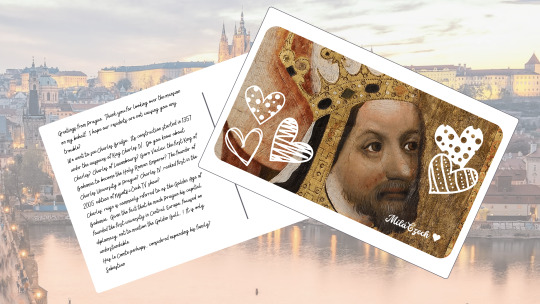
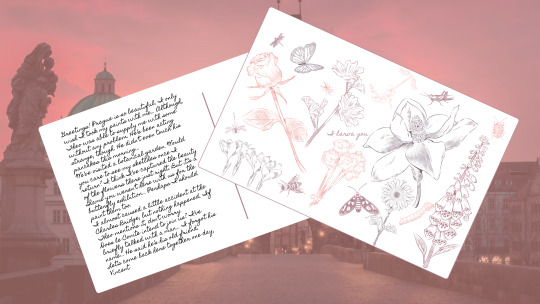

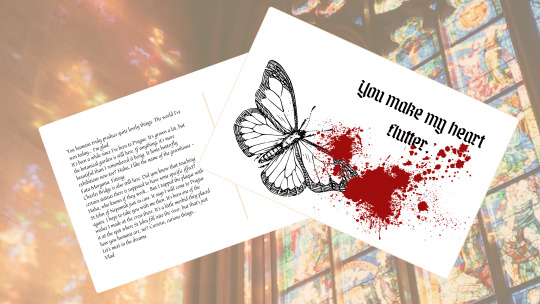
Ahoj, holiday season!
Would you look at that, it appears our beloved suitors have already started their vacation.
Who else sent us postcards? Are there any connections between them? What misadventures befell them? Well, there's only one way to find out -- stay tuned!
Best wishes from the crew of IFE.
Transcriptions below the cut.
Greetings from Prague. Thank you for looking over the mansion on my behalf. I hope our residents are not causing you any trouble?
We went to see Charles Bridge. Its construction started in 1357 under the auspices of King Charles IV. Do you know about Charles? Charles of Luxembourg? Born Václav, the first King of Bohemia to become the Holy Roman Emperor? The founder of Charles University in Prague? Charles IV, ranked first in the 2005 edition of Největší Čech TV show?
Charles’ reign is commonly referred to as the Golden Age of Bohemia. Given the fact that he made Prague his capital, founded the first university in Central Europe, focused on diplomacy, not to mention the Golden Bull… ! It is only understandable.
Has le Comte perhaps… considered expanding his family?
Sebastian
--
Greetings! Prague is so beautiful. I only wish I took my paints with me… Although, Theo was able to supply me with some without any problem. He’s been acting strange, though. He didn’t even touch his pancakes this morning…
We’ve visited a botanical garden. Would you care to see my sketches once I return? I think I’ve captured the beauty of the flowers there just right. But it’s a shame you weren’t here with us for the butterfly exhibition… Perhaps I should paint them too.
I almost caused a little accident at the Charles Bridge, but nothing happened. If Theo mentions it, don’t worry.
Does le Comte intend to join us? I’ve briefly talked with a man… I forgot his name… He said he’s his old friend.
Let’s come back here together one day,
Vincent
--
Hondje,
Tell le Comte that his old acquaintance is scheming something. Vlad’s been following me and my broer for days now.
We’ve been to a botanical garden today. Broer wanted to sketch some of their orchids and other plants for practice. We learnt that there are butterflies in the Fata Morgana Greenhouse, so we went there. The moment I turned around, I could see a black cloak fluttering in the corner of my eye. I know he was there.
Also, what is it with those ridiculous fees for painting at Charles Bridge?! Vincent wanted to make a wish, so we went there. He set up his easel, and we almost got fined… They listened to Sebas’ rambling about the king, though, and left us off the hook.
Be a good puppy and notify le Comte that something is off. What could Vlad want from my broer?
--
You humans truly produce quite lovely things. The world I’ve seen today… I’m glad.
It’s been a while since I’ve been to Prague. It’s grown a lot, but the botanical garden is still here. If anything, it’s more beautiful than I remembered it being. It hosts butterfly exhibitions now too? Haha, I like the name of the greenhouse – Fata Morgana. Fitting.
Charles Bridge is also still here. Did you know that touching certain statues there is supposed to have some specific effect? Haha, who knows if they work… But I tapped the plaque with St John of Nepomuk just in case. It says I will come to Prague again. I hope to take you with me then. It’s been one of the wishes I made at the cross there. It’s a little morbid they placed it at the spot where St John fell into the river, but that’s just how you humans are, no? Curious, curious things…
Let’s meet in the dreams.
Vlad
#sebastian#ikemen vampire sebastian#ikevamp sebastian#ikevam sebastian#vlad#ikemen vampire vlad#ikevamp vlad#ikevam vlad#theodorus van gogh#ikevam theodorus#ikevamp theodorus#ikevam theo#ikevamp theo#ikemen vampire theodorus#ikemen vampire theo#vincent van gogh#ikevamp vincent#ikevam vincent#ikemen vampire vincent#ikemen vampire#ikevam#ikevamp#ikemen series
31 notes
·
View notes
Text
Educating the princesses

“All of these princesses, both foreign and French, had received a first-rate education. Some were raised at the French court from childhood, such as Philip IV’s wife Joan of Navarre and Charles VIII’s young fiancée Margaret of Austria. Others were educated within their own families in their respective principalities.
Educators had long debated what women should be taught. In 1265,
Philip of Novara had advised against teaching girls—except for nuns— how to read and write. He was, however, in the minority. Far from being neglected when it came to aristocratic education, women were the recipients of veritable miroirs aux princesses (didactic works presenting the exemplary image of the good ruler or, for women, the ideal princess), which reveal all the care that went into their training—as religious as it was moral and intellectual.
(...)
Beyond these theoretical treatises, sources on the practice of that time provide information about the educational methods of the period. Young princesses learned to read and often write. Such instruction often took place within the palace under a tutor. At the court of Savoy in the mid-fifteenth century, Pierre Aronchel was the schoolmaster of Louis and Anne of Cypress’s eldest daughters Margaret and Charlotte (future wife of Louis XI).
Like their brothers, young princesses first learned reading and religion. They learned to read using an alphabet book (Margaret of Austria learned the alphabet using a book handsomely bound in black velvet) and continued with psalters and books of hours. At the age of seven, young Joan of France, who was married to the Count of Montfort, received a richly illuminated book of hours of Notre-Dame from her mother Isabeau of Bavaria. During the fourteenth century, young girls at the court of Savoy practiced reading using liturgical collections, matins and penitential psalms, which were replaced by books of hours in the fifteenth century. Like their brothers, Savoyard princesses also learned to write.
Latin, however, was reserved for boys, which was one of the primary differences when it came to education. Princesses only knew the necessary prayers and formulas for following mass and reading their books of hours. There were a few exceptions nonetheless. Saint Louis’s sister Isabella of France (d. 1270), for example, was reputedly an excellent Latinist.
Failing Latin, aristocratic ladies knew other languages. John II’s future wife Bonne of Luxembourg, who had been raised in Bohemia, spoke Czech, German and French. Yolanda of Bar —daughter of Robert, Duke of Bar, and wife of John I, King of Aragon—could read ‘Limousin’ and Latin in addition to being able to write in French and Catalan. Others had a harder time learning a foreign language. During her entry ceremony in Paris in 1389, Isabeau of Bavaria was criticized for her poor understanding of French—four years after she had arrived in the kingdom.”
Queenship in medieval france 1300-1500, Murielle Gaude-Ferragu
#history#women in history#women's history#queens#middle ages#medieval women#france#french history#medieval history#isabeau of bavaria#Joan of navarre
96 notes
·
View notes
Photo
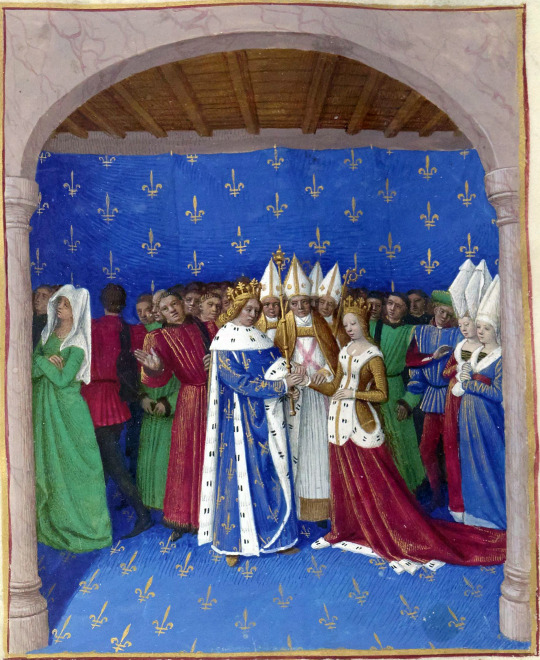
(Jean Fouquet, Marriage of Charles IV and Marie of Luxembourg, c. 1455)
13 notes
·
View notes
Photo

Portait of Bonne de Berry, wife of Amedeo VII of Savoy.
Bonne was the eldest daughter of Prince Jean, Duke of Berry, brother of King Charles V of France, and his first wife Jeanne, daughter of Count Jean I of Armagnac. She was named in memory of her paternal grandmother, Bonne de Luxembourg, sister of Emperor Charles IV and daughter of John I of Bohemia, known as the Blind.
#italian aristocracy#house of savoy#casa savoia#bonne de berry#maison de valois#royaume de france#full-length portrait#french aristocracy#kingdom of italy#full length portrait
9 notes
·
View notes
Text
Well, none of my friends wanted to listen my endless gibberish about High Middle Ages, so my bro advised me to create a tumblr blog.
So, yeah, now you will have to listen to my stupid historical jokes. Good luck.
What will be here?
Well, mainly:
• European history in general
• European Middle Ages (history, culture and other stuff)
And if you want a more precise list:
• Hohenstaufen family
• Especially about Friedrich II
• France vs England because it’s classic
• Kingdom of Bohemia and HRE in general
• Charles IV (Charles of Luxembourg) because he’s gorgeous
• “The Divine Comedy” by Dante Alighieri
• Medici family
• Niccolo Machiavelli because he is gorgeous as well
• Lot’s of random stuff about Medieval Italy
• And be prepared for lot’s of silly jokes on these topics
"Feci quod potui faciant meliora potentes"
© Probably said by someone very long time ago, quoted by me 2000 years after
About the paintings I used:
Profile image: Portrait of Giotto, detail from “Five Famous Men of the Florentine Renaissance” by unknown author
Profile heading: “The Court of Emperor Frederick II in Palermo” by Arthur von Ramberg
#middle ages#europe#european history#history#holy roman empire#dante alighieri#the divine comedy#machiavelli#Medici#Hohenstaufen#federico ii#Duke’s jokes
18 notes
·
View notes
Photo

~ “The Jasper. This very ancient term of origin can be found in all languages: in Hebrew, iaschpeh; in Assyrian, iashpu; in Persian iashm etjashp; in Greek, iaspis, translated iaspis into Latin, iaspe and then jaspe in French.From its Greek name ‘iaspis’ and its Latin ‘jaspidem’, the jasper stone means spiked stone. In prehistoric times, this stone was used to design tools. This amazing stone is mined in different countries around the world, including Russia, and every nation has given the jasper its poetic names. We call her the ‘African Queen’, and ‘snake skin’, and ‘autumn leaf’, and ocean coat, and porcelain jasper (gray and soft cream tones with barely noticeable veins).It is used in balls, cabochons for fancy jewellery, and as an ornamental stone to make various cups and decorative items. The jasper is used to adorn buildings such as the chapel of St. Wenceslas at Prague Castle, so dressed in 1347 on the order of Bohemian King Charles IV of Luxembourg, then German Emperor.Latest stencil of Cartier. Red Jasper.” ~
3 notes
·
View notes
Photo

monument “Prague To Its Victorious Sons” with the Emmaus Monastery in the background
(infrared photography)
The monument was created by sculptor Josef Mařatka in memory of the Czechoslovak legionnaires who fell during World War I. It was unveiled on 28 October 1932. The 16-metre high granite obelisk is surrounded by a group of seven legionaries (one Italian, two Russian and four French) and a female figure representing the city of Prague.
The monument was destroyed during the German occupation of Czechoslovakia. A bronze copy was unveiled on 28 October 1998.
The Emmaus Monastery with the Church of the Assumption of the Virgin Mary was founded by King Charles IV. Luxembourg in 1347 for the Benedictines to strengthen Slavic relations. It became a centre of education, art and Slavic literature.
Over the following centuries it was modified several times. However, today's typical appearance of the concrete shell wings is the result of renovations designed by architect František Maria Černý in the 1950s. These were carried out after bombs in an air raid in 1945 destroyed most of the monastery, including many wall paintings.
#photographers on tumblr#original photographers#infrared photography#emmaus monastery#architecture#josef mařatka#františek maria černý#legionnaires#sculpture#monument#monastery#emauzy#prague#praha#infrared
4 notes
·
View notes
Text
Week 5: Dobrou chuť! (Bon appétit!)
Čau!
It's Reese again. Welcome back to my life in Praha, this week has been my busiest yet! As I mentioned in last week’s blog, I flew back from Amsterdam Sunday night with my friend Samantha who’s studying in London. Her program is on Spring Break, so she was able to stay with me for 3 nights. Later this week, my dad also arrived in Prague to visit me :) Stay tuned for all of our adventures.
Petřín Hill
With Samantha in town, we set out to find the best view of Prague. Standing 138 meters (452 ft) above sea level, Petřín Hill seemed like a good contender. There’s a funicular that takes you to the top of the hill which was included in our transportation passes, which was clutch. At the top of the hill, we found the Petřín Lookout Tower, which resembles a petite Eiffel Tower! Its observation deck is the highest in Prague at 200 meters (656 ft) above the Vltava River that runs through the city. It was foggy outside, but the panoramic views were incredible. Try to find Prague Castle in the picture below!

Architecture Tour (Prague Castle)
For this week’s architecture tour we went to Prague Castle! I lucked out because I had been meaning to show Samantha around the complex, but the timing was difficult due to my classes. Fortunately, my instructor let me bring her along!
The first notable site we visited contained the remnants of the Church of the Virgin Mary, which was the first stone building in the complex and served as the second oldest church in Bohemia. The construction of this church initiated the gradual development of Prague Castle as a residence of monarchs and authoritative figures. We were fortunate to witness the Prime Minister of Poland being escorted out of the complex as we were crossing the courtyard, which demonstrates the political significance of the site that remains to this day. Below is a picture of the escort.

Next we observed the Old Royal Palace, which was originally designed in Romanesque style and served as the residence for Bohemian kings from the 10th to the 16th century. It was later transformed by Emperor Charles IV into a Gothic palace with a vaulted interior that served state purposes. Charles IV was a well-educated diplomat from Luxembourg with a vision to establish Prague as the center of politics in Central Europe. Although he never fully achieved his vision, the architecture built during his reign stands as a testament to Prague's political and cultural importance in Europe.
In his time, Charles IV also tore down the Romanesque Basilica of St Vitus, which stood in the place of the St. Vitus Rotunda that was founded in the 10th century by St. Wenceslas. There, Charles constructed a monumental Gothic cathedral, the largest in Europe at the time. Apart from being a space for religious services, St Vitus Cathedral became a coronation place for kings, as well as the final resting place of prominent Bohemian figures like Charles IV himself. Matthias of Arras was the architect who designed the cathedral in a French-like style. It features high Gothic architecture with pointed arches and tall spires symbolizing a vertical connection between society and the divine. Due to financial constraints and resource shortages, however, the tower could not be finished in Gothic style... check out the green finish in the image below!

In the 16th century, Prague Castle became the center of power for the Habsburg dynasty. This led to remodeling in the Renaissance style, including the construction of the last palace, Schwarzenberg Palace, within the castle complex. The Renaissance period saw the rebirth of classical ideas and principles. The Schwarzenberg Palace illustrates classical architectural elements and characteristics. The facade is symmetrical, with evenly spaced windows and doors and elaborate ornamentation. This detailed, yet balanced, composition showcases the Renaissance ideals of beauty and order in art.
Prague Castle has served as the seat of power in the Czech region for centuries as the residence of Bohemian kings, Holy Roman Emperors, and nowadays, the president of the Czech Republic. The architectural evolution of the complex reflects shifts in political power and ideology, from the monarchy of the Middle Ages to the absolutist rule of the Habsburgs, and, finally, the establishment of democratic governance in the 20th century. To the Czech people, Prague Castle is a symbol of national identity and pride. The iconic silhouette that overlooks the city is an everyday reminder of their quest for self-determination throughout history.
Symphony
Yet another beautiful symphony to share with you all this week. Brandon, our classical music expert, picked this show out specifically. The first movement, Symphony D Minor La Tampesta, was written by Austrian composer Pavel Vranický, an influential figure in Vienna’s musical life at the turn of the 18th and 19th centuries who worked closely with Beethoven. La Tampesta is named for the evocative depiction of a storm in the third movement. I vividly remember the use of the gong in this movement, adding to the strikingly powerful composition.
The second movement, Eroica, is from Beethoven's third symphony but famous for the circumstances for its original dedication to Napoleon. Beethoven crossed out the dedication after Napoleon declared himself Emperor and replaced it with a dedication to his patron, Prince Joseph Franz Maximilian von Lobkowicz. Eroica was considered to be the first symphony of Romanticism, and ahead of its time in its symphonic form, length, harmony, emotional and cultural content.
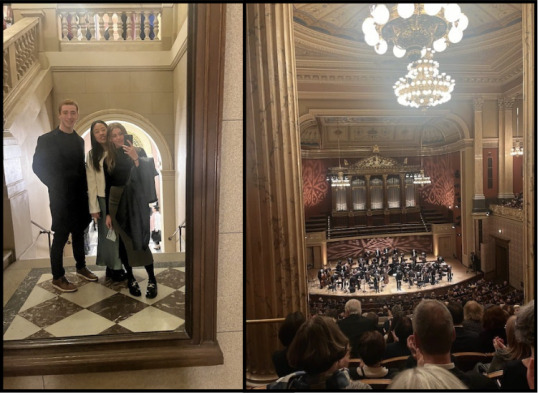
Dad Visiting
This week after Samantha left, my dad came to visit for two weekends! We're super close, and I can't wait to introduce him to my friends – he's already heard so much about them. I’ve been looking forward to him coming for a while, ever since we planned our trips in January to Berlin and Switzerland! It’ll be a nice break to travel with him because we’re super compatible. Both of us like to take our time, wander in search of hidden gems, and learn about the local culture and history. Hear more about our Berlin trip in a later section of this week's blog.
Czech Cooking Class
Every Friday IFSA sponsors an event for the students who stayed in town for the day or weekend. This week’s event was a Czech specialty cooking class! Because my dad was still jet lagged from his arrival Thursday night, we weren’t leaving for Berlin until Saturday morning. No complaints for the late departure though, I was super excited to have the opportunity to learn how to properly cook Czech cuisine. We made dumplings, potato soup, buttery sauced chicken, and an apple streusel. There was a solid group of 10 students, along with our two cool program directors, Ady and Dominika, who made it even more fun!

Berlin!
This weekend my dad and I went to Berlin! We took the train on Saturday morning for just over 4 hours to get there, and immediately checked into the hotel so we could explore. Our first stop was the Berlin Wall memorial, which commemorates the division of Berlin by the Berlin Wall. It was sad but interesting to learn about the circumstances of living on each side of the wall, and the deaths that occurred at the border. I learned that my dad studied abroad in the winter of 1989, and was supposed to be in Berlin when the wall fell in November 1989, but chose to visit Paris instead due to the chaos surmounting in the city! We then headed to the East Side Gallery afterwards, an open-air gallery consisting of a series of murals painted directly on the longest surviving section of the Berlin Wall on Mühlenstraße in Friedrichshain-Kreuzberg. The gallery consists of 105 paintings by artists from all over the world, originally painted in 1990 on the side of the Wall that was formerly facing East Berlin. The paintings comment on the political changes of 1989/90, reflecting a period of change and optimism for a freer future worldwide.
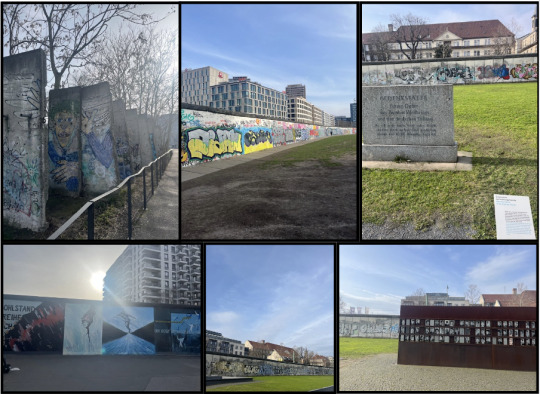
The actual border at the time had been the river Spree, which we walked along to get to our next stop: Markthalle Neun. It became a full-on Naschmarkt, or snack market! There were tens of stalls showcasing their sweet and savory goods, like bread, cheese, buns, chocolates, pizza, wine, beer, and more! It was packed with people flowing out into the streets, making for an extremely local, lively atmosphere that couldn’t be missed. My dad, who typically hates such crowded spaces, absolutely loved it and wished we could spend more time there. Check out some of the food we got below, including pizza, ice cream, and a cannoli!

Next, we headed north to the Brandenburg Gate, arriving just in time for sunset. It was originally built in 1791 as an entrance to Unter den Linden, which led to the Prussian palace, but later became a symbol of German division, as the Berlin Wall shut off access to the gate for both East and West Germans. It served as the backdrop for President Ronald Reagan’s famous 1987 speech in which he pleaded, “Mr. Gorbachev, tear down this wall.” The gate is now a national symbol of peace and unity. Nearby we visited the Holocaust memorial, also known as the Memorial to the Murdered Jews of Europe. Architect Peter Eisenman placed 2711 concrete stelae of different heights to create an immersive spatial structure. The abstract design leaves it up to visitors to interpret the meaning behind the memorial as they walk through. I noticed that people suddenly seem to disappear behind the concrete blocks, despite being in front of you the very moment before. It felt like an act of surveillance, paired with voidness and abandonment. The towering sensation of the concrete blocks only added to the overwhelming feeling of uncertainty and discomfort. The grid shape of the memorial, however, served to emit light at the end of each aisle.
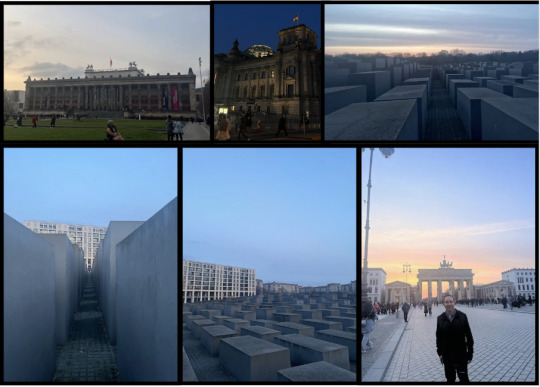
The time we spent here was emotionally taxing, so we decided to take a walk before heading back to the hotel to freshen up and get ready for dinner. We were sure to walk past the Reichstag, the German parliament building, but we were not permitted entry since we hadn’t gotten tickets in advance.
Saturday night, my dad and I decided to hang out at the hotel bar for a couple of hours. We chatted with these two women, one from Canada and the other China, who had moved to Berlin a few years ago. They explained that Berlin is a hub for art and expression, and that only one third of the Berlin population is actually from Berlin. Another third is made up of German natives, and the final third comes from the rest of the world, which I thought was pretty cool.
Sunday morning we checked out the Schloss Charlottenburg (Charlottenburg Palace) from its gardens. They were simply beautiful and had an incredible view of the palace over the river. As an added bonus, the sun beamed through the clouds in a way that perfectly complemented the cool morning air. I found a Biergarten for lunch afterwards, a local spot with amazing and authentic dishes. Our meal was prolonged due to our order being misplaced in the kitchen, but they gave us a free apple crumble for the trouble. Definitely worth it!
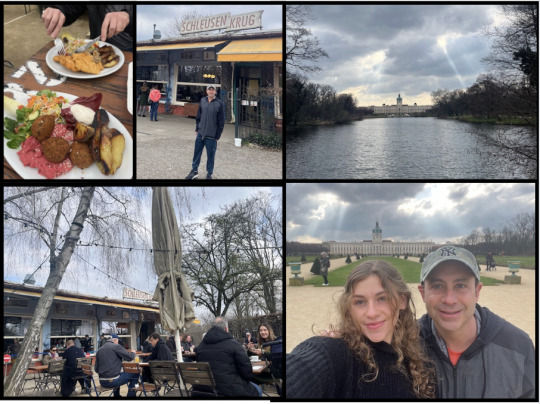
We only had time for one museum Sunday afternoon, so I picked Topographie des Terrors, a site of remembrance on the site of the SS central command where the Gestapo, SS, and Reich Security Main Office operated during the Nazi regime. The permanent exhibition, "Topography of Terror," details the crimes committed there. Outside, we found another permanent exhibition, "Berlin 1933-1945," which focused on Nazi policies in the city. Many of these I had learned about in the Holocaust class I took back in Ann Arbor. The details hit much harder, however, when reviewing this information in the station at which the crimes were planned and atrocities were determined to be executed. My dad and I both wished we had a longer time in Berlin, both to learn and explore… but it gives us all the more reason to go back!

Now, some ins and outs for the week.
Ins:
Bringing visitors to class: Samantha not only joined my architecture tour, but was able to sit in on my Essential Czech class as well! The professors were super cool about this, especially if the visitor is willing to learn and engage with the rest of the class.
Essential Czech: This class is my favorite by far. It’s only once a week for an hour, but our professor has so much energy and charisma. We always start off by sharing new Czech words we’ve heard or seen throughout the week, and then move into the lesson plan for the day. It’s extremely low pressure and always has good vibes. This week, the other two sections of the class congregated in our classroom to learn a song to sing!

Gelato: We’ve had an obsession with gelato lately… to the point where we have made friends with the workers and have no shame. The gelato is super fresh, sooooo incredibly tasty, and the small cone is 59 crowns (just over $2). Bonus points for allowing customers to choose more than one flavor no matter the size, and for having WiFi!
Outs:
Random illnesses: Samantha got super sick when she was visiting and out of nowhere started throwing up. I think it may have been a combination of dehydration and pushing her body too far this week. I started not feeling well a couple days after she left too. It was definitely a signal to take a couple steps back and let the body get the rest it needs.
Spring Break: Although we were promised to have some sort of spring break in our program, it amounted to only 1 day off of school for Easter Monday. Nearly all other abroad programs and UM had this week off to travel or take a rest, so we were jealous. Because of our attendance policy, I wasn’t able to meet up with all my friends in Barcelona and Madrid this week, which I was super sad about.
Stolen Phones: Lydia got her phone stolen in Barcelona this week, and she was definitely not the first person that this happened to while abroad! Served as a harsh reminder to be careful and keep all your belongings well hidden and on you at all times. It's a total pain to get a new phone and sim abroad, especially since most of us have already had to change or add a new phone number. Fortunately, her brother visits next week and will bring her a new device... but for now, she's got a burner (with an atrocious camera)!
That’s all for this week! As always, thank you for reading this far. To all Michigan students - I hope you had a fun, relaxing, and rejuvenating break!
Na shledanou,
Reese Liebman
Computer Science and Engineering
Institute for Study Abroad (IFSA) CS Tech Career Accelerator in Prague, Czechia
0 notes
Text
Events 7.11 (before 1900)
472 – After being besieged in Rome by his own generals, Western Roman Emperor Anthemius is captured in St. Peter's Basilica and put to death.
813 – Byzantine emperor Michael I, under threat by conspiracies, abdicates in favor of his general Leo the Armenian, and becomes a monk (under the name Athanasius).
911 – Signing of the Treaty of Saint-Clair-sur-Epte between Charles the Simple and Rollo of Normandy.
1174 – Baldwin IV, 13, becomes King of Jerusalem, with Raymond III, Count of Tripoli as regent and William of Tyre as chancellor.
1302 – Battle of the Golden Spurs (Guldensporenslag in Dutch): A coalition around the Flemish cities defeats the king of France's royal army.
1346 – Charles IV, Count of Luxembourg and King of Bohemia, is elected King of the Romans.
1405 – Ming admiral Zheng He sets sail to explore the world for the first time.
1410 – Ottoman Interregnum: Süleyman Çelebi defeats his brother Musa Çelebi outside the Ottoman capital, Edirne.
1476 – Giuliano della Rovere is appointed bishop of Coutances.
1576 – While exploring the North Atlantic Ocean in an attempt to find the Northwest Passage, Martin Frobisher sights Greenland, mistaking it for the hypothesized (but non-existent) island of "Frisland".
1616 – Samuel de Champlain returns to Quebec.
1735 – Mathematical calculations suggest that it is on this day that dwarf planet Pluto moved inside the orbit of Neptune for the last time before 1979.
1789 – Jacques Necker is dismissed as France's Finance Minister sparking the Storming of the Bastille.
1796 – The United States takes possession of Detroit from Great Britain under terms of the Jay Treaty.
1798 – The United States Marine Corps is re-established; they had been disbanded after the American Revolutionary War.
1801 – French astronomer Jean-Louis Pons makes his first comet discovery. In the next 27 years he discovers another 36 comets, more than any other person in history.
1804 – A duel occurs in which the Vice President of the United States Aaron Burr mortally wounds former Secretary of the Treasury Alexander Hamilton.
1833 – Noongar Australian aboriginal warrior Yagan, wanted for the murder of white colonists in Western Australia, is killed.
1836 – The Fly-fisher's Entomology is published by Alfred Ronalds. The book transformed the sport and went to many editions.
1848 – Waterloo railway station in London opens.
1864 – American Civil War: Battle of Fort Stevens; Confederate forces attempt to invade Washington, D.C.
1882 – The British Mediterranean Fleet begins the Bombardment of Alexandria in Egypt as part of the Anglo-Egyptian War.
1889 – Tijuana, Mexico, is founded.
1893 – The first cultured pearl is obtained by Kōkichi Mikimoto.
1893 – A revolution led by the liberal general and politician José Santos Zelaya takes over state power in Nicaragua.
1897 – Salomon August Andrée leaves Spitsbergen to attempt to reach the North Pole by balloon.
1899 – Fiat founded by Giovanni Agnelli in Turin, Italy.
0 notes
Photo

This Roman city
This Roman city, mainly on the island, but with annexes, north and south, on the mainland, according to the legend of St. Genevieve, repels the assault of Attila, is captured by Clovis at the end of the fifth century, and is made his capital. During the early monarchy, the island was the city, the home of the kings, the seat of the church, of government, and of justice, crowded with narrow streets and churches, and densely populated.
Gradually as the walls of Paris were extended in a series of circuits from the twelfth to the eighteenth century, the island city was eased of its close population, and at last in our own day was cleared altogether by gigantic sweeps of destruction and reconstruction. It once contained some 50,000 inhabitants, at least fifty or sixty streets, and more than twenty churches. To-day it has few private houses left, except at each end. As we said, the Citi consists of Cathedral, Palais de Justice, and Sainte Chapelle, Conciergerie and Prisons, Prefecture of Police, Chamber of Commerce, a huge hospital, a huge barrack, a flower market — vast places,’ gardens, quays, and Morgue. This is almost all that stands on the Paris of Julian, Clovis, and Hugh Capet.
Roman and Gallo-Roman circuit
It is a task full of historical teaching to trace the successive circuits and the walls of the city as it gradually grew. Each circuit represents an epoch in the history of France. First comes the old Roman and Gallo-Roman circuit — the Citi or island with some fortified post at the head of the North Bridge (PI. du Chatelet) and at the South Bridge (R. St. Jacques) extending on the South mainland as far as the Thermes with villas, theatres, cemeteries, and establishments outside the city circuit. The second circuit is that of Louis the Stout, the great restorer of the monarchy (1130), who built the Grand Chdtelet on the site of the Place du Chatelet, and the Petit Chatelet on the Quai St. Michel (left bank).
The third circuit is that of the great king Philip Augustus (1200), who built the Louvre, completed Notre Dame, and carried the walls North as far as St. Eustache, South as far as the Pantheon private tour istanbul, and included the smaller island, so that the original Citi was now but a sixth of the city. Next comes the fourth circuit, raised by Etienne Marcel in the middle of the fourteenth century, just after Poitiers during the great English War, who is duly commemorated by the fine equestrian statue beside the Hotel du Ville. Marcel laid the foundations of the Bastille, and repaired and strengthened rather than extended the circuit of Philip Augustus; and then the whole work was completed by Charles v. in the second half of the fourteenth century.
The fifth great circuit is that of Richelieu under Louis XIII. who carried the city walls Northwards as far as the existing inner Boulevards, and the R. Richelieu and its quarter is one of its additions; and Southwards it inclosed the whole district of the Luxembourg and its gardens to the Jardin des Plantes. The sixth great change came in the reign of Louis xiv. who conceiving himself invincible in France, if not in Europe, found fortifications in Paris needless and barbarous. Accordingly in his reign the old walls of Henry iv. and Richelieu were razed, and the Boulevards that we know were constructed as spacious avenues. On the site of the ancient Tour de Nesle, the Institute and the College Mazarin were built; the Louvre was completed and transformed into an Italian palace; the Tuileries were continued until they joined the Louvre; the Invalides and other great works were continued, and finally Paris received its character of an open modern city of Palladian architecture.
0 notes
Text
Ages of French Queens at First Marriage
I have only included women whose birth dates and dates of marriage are known within at least 1-2 years, therefore, this is not a comprehensive list.
This list is composed of Queens of France until the end of the House of Bourbon; it does not include Bourbon claimants or descendants after 1792.
The average age at first marriage among these women was 20.
Ermentrude of Orléans, first wife of Charles the Bald: age 19 when she married Charles in 842 CE
Richilde of Provence, second wife of Charles the Bald: age 25 when she married Charles in 870 CE
Richardis of Swabia, wife of Charles the Fat: age 22 when she married Charles in 862 CE
Théodrate of Troyes, wife of Odo: age 14 or 15 when she married Odo in 882 or 883 CE
Frederuna, wife of Charles III: age 20 when she married Charles in 907 CE
Beatrice of Vermandois, second wife of Robert I: age 10 when she married Robert in 990 CE
Emma of France, wife of Rudolph: age 27 when she married Rudolph in 921 CE
Gerberga of Saxony, wife of Gilbert, Duke of Lorraine, and later of Louis IV: age 16 when she married Gilbert in 929 CE
Emma of Italy, wife of Lothair: age 17 when she married Lothair in 965 CE
Adelaide-Blanche of Anjou, wife of Stephen, Viscount of Gévaudan, Raymond III, Count of Toulouse, and later Louis V: age 15 when she married Stephen in 955 CE
Bertha of Burgundy, wife of Odo I, Count of Blois, and later Robert II: age 19 when she married Odo in 984 CE
Constance of Arles, third wife of Robert II: age 17 when she married Robert in 1003 CE
Anne of Kiev, wife of Henry I: age 21 when she married Henry in 1051 CE
Bertha of Holland, first wife of Philip I: age 17 when she married Philip in 1072 CE
Bertrade of Montfort, wife of Fulk IV, Count of Anjou, and second wife of Philip I: age 19 when she married Fulk in 1089 CE
Adelaide of Maurienne, second wife of Louis VI: age 23 when she married Louis in 1115 CE
Eleanor of Aquitaine, first wife of Louis VII and later Henry II of England: age 15 when she married Louis in 1137 CE
Adela of Champagne, third wife of Louis VII: age 20 when she married Louis in `1160 CE
Isabella of Hainault, first wife of Philip II: age 10 when she married Philip in 1180 CE
Ingeborg of Denmark, second wife of Philip II: age 19 when she married Philip in 1193 CE
Agnes of Merania, third wife of Philip II: age 21 when she married Philip in 1195 CE
Blanche of Castile, wife of Louis VIII: age 12 when she married Louis in 1200 CE
Margaret of Provence, wife of Louis IX: age 13 when she married Louis in 1234 CE
Isabella of Aragon, first wife of Philip III: age 14 when she married Philip in 1262 CE
Marie of Brabant, second wife of Philip III: age 20 when she married Philip in 1274 CE
Joan I of Navarre, wife of Philip IV: age 11 when she married Philip in 1284 CE
Margaret of Burgundy, wife of Louis X; age 15 when she married Louis in 1305 CE
Clementia of Hungary, second wife of Louis X: age 22 when she married Louis in 1315 CE
Joan II, Countess of Burgundy, wife of Philip V: age 15 when she married Philip in 1307 CE
Blanche of Burgundy, first wife of Charles IV: age 12 when she married Charles in 1308 CE
Marie of Luxembourg, second wife of Charles IV: age 18 when she married Charles in 1322 CE
Joan of Évreux, third wife of Charles IV: age 14 when she married Charles in 1324 CE
Bonne of Luxembourg, first wife of John II: age 17 when she married John in 1332 CE
Joan I, Countess of Auvergne, wife of Philip of Burgundy, and later John II: age 12 when she married Philip in 1338 CE
Joanna of Bourbon, wife of Charles V: age 12 when she married Charles in 1350 CE
Isabeau of Bavaria, wife of Charles VI: age 15 when she married Charles in 1385 CE
Marie of Anjou, wife of Charles VII: age 18 when she married Charles in 1422 CE
Charlotte of Savoy, second wife of Louis XI: age 9 when she married Louis in 1451 CE
Anne of Brittany, wife of Maximilian I, HRE, Charles VIII and later Louis XII: age 13 when she married Maximilian in 1490 CE
Joan of France, first wife of Louis XII: age 12 when she married Louis in 1476 CE
Mary Tudor, third wife of Louis XII: age 18 when she married Louis in 1514 CE
Claude of France, first wife of Francis I: age 15 when she married Francis in 1514 CE
Eleanor of Austria, wife of Manuel I of Portugal and later second wife of Francis I: age 20 when she married Manuel in 1518 CE
Catherine de' Medici, wife of Henry II: age 14 when she married Henry in 1533 CE
Mary, Queen of Scots, wife of Francis II: age 16 when she married Francis in 1558 CE
Elisabeth of Austria, wife of Charles IX: age 16 when she married Charles in 1570 CE
Louise of Lorraine, wife of Henry III: age 22 when she married Henry in 1575 CE
Margaret of Valois, first wife of Henry IV: age 19 when she married Henry in 1572 CE
Marie de' Medici, second wife of Henry IV: age 25 when she married Henry in 1600 CE
Anne of Austria, wife of Louis XIII: age 14 when she married Louis in 1615 CE
Maria Theresa of Spain, wife of Louis XIV: age 22 when she married Louis in 1660 CE
Marie Leszczyńska, wife of Louis XV: age 22 when she married Louis in 1725 CE
Marie Antoinette, wife of Louis XVI: age 15 when she married Louis in 1770 CE
37 notes
·
View notes
Photo

This Roman city
This Roman city, mainly on the island, but with annexes, north and south, on the mainland, according to the legend of St. Genevieve, repels the assault of Attila, is captured by Clovis at the end of the fifth century, and is made his capital. During the early monarchy, the island was the city, the home of the kings, the seat of the church, of government, and of justice, crowded with narrow streets and churches, and densely populated.
Gradually as the walls of Paris were extended in a series of circuits from the twelfth to the eighteenth century, the island city was eased of its close population, and at last in our own day was cleared altogether by gigantic sweeps of destruction and reconstruction. It once contained some 50,000 inhabitants, at least fifty or sixty streets, and more than twenty churches. To-day it has few private houses left, except at each end. As we said, the Citi consists of Cathedral, Palais de Justice, and Sainte Chapelle, Conciergerie and Prisons, Prefecture of Police, Chamber of Commerce, a huge hospital, a huge barrack, a flower market — vast places,’ gardens, quays, and Morgue. This is almost all that stands on the Paris of Julian, Clovis, and Hugh Capet.
Roman and Gallo-Roman circuit
It is a task full of historical teaching to trace the successive circuits and the walls of the city as it gradually grew. Each circuit represents an epoch in the history of France. First comes the old Roman and Gallo-Roman circuit — the Citi or island with some fortified post at the head of the North Bridge (PI. du Chatelet) and at the South Bridge (R. St. Jacques) extending on the South mainland as far as the Thermes with villas, theatres, cemeteries, and establishments outside the city circuit. The second circuit is that of Louis the Stout, the great restorer of the monarchy (1130), who built the Grand Chdtelet on the site of the Place du Chatelet, and the Petit Chatelet on the Quai St. Michel (left bank).
The third circuit is that of the great king Philip Augustus (1200), who built the Louvre, completed Notre Dame, and carried the walls North as far as St. Eustache, South as far as the Pantheon private tour istanbul, and included the smaller island, so that the original Citi was now but a sixth of the city. Next comes the fourth circuit, raised by Etienne Marcel in the middle of the fourteenth century, just after Poitiers during the great English War, who is duly commemorated by the fine equestrian statue beside the Hotel du Ville. Marcel laid the foundations of the Bastille, and repaired and strengthened rather than extended the circuit of Philip Augustus; and then the whole work was completed by Charles v. in the second half of the fourteenth century.
The fifth great circuit is that of Richelieu under Louis XIII. who carried the city walls Northwards as far as the existing inner Boulevards, and the R. Richelieu and its quarter is one of its additions; and Southwards it inclosed the whole district of the Luxembourg and its gardens to the Jardin des Plantes. The sixth great change came in the reign of Louis xiv. who conceiving himself invincible in France, if not in Europe, found fortifications in Paris needless and barbarous. Accordingly in his reign the old walls of Henry iv. and Richelieu were razed, and the Boulevards that we know were constructed as spacious avenues. On the site of the ancient Tour de Nesle, the Institute and the College Mazarin were built; the Louvre was completed and transformed into an Italian palace; the Tuileries were continued until they joined the Louvre; the Invalides and other great works were continued, and finally Paris received its character of an open modern city of Palladian architecture.
0 notes
Photo

This Roman city
This Roman city, mainly on the island, but with annexes, north and south, on the mainland, according to the legend of St. Genevieve, repels the assault of Attila, is captured by Clovis at the end of the fifth century, and is made his capital. During the early monarchy, the island was the city, the home of the kings, the seat of the church, of government, and of justice, crowded with narrow streets and churches, and densely populated.
Gradually as the walls of Paris were extended in a series of circuits from the twelfth to the eighteenth century, the island city was eased of its close population, and at last in our own day was cleared altogether by gigantic sweeps of destruction and reconstruction. It once contained some 50,000 inhabitants, at least fifty or sixty streets, and more than twenty churches. To-day it has few private houses left, except at each end. As we said, the Citi consists of Cathedral, Palais de Justice, and Sainte Chapelle, Conciergerie and Prisons, Prefecture of Police, Chamber of Commerce, a huge hospital, a huge barrack, a flower market — vast places,’ gardens, quays, and Morgue. This is almost all that stands on the Paris of Julian, Clovis, and Hugh Capet.
Roman and Gallo-Roman circuit
It is a task full of historical teaching to trace the successive circuits and the walls of the city as it gradually grew. Each circuit represents an epoch in the history of France. First comes the old Roman and Gallo-Roman circuit — the Citi or island with some fortified post at the head of the North Bridge (PI. du Chatelet) and at the South Bridge (R. St. Jacques) extending on the South mainland as far as the Thermes with villas, theatres, cemeteries, and establishments outside the city circuit. The second circuit is that of Louis the Stout, the great restorer of the monarchy (1130), who built the Grand Chdtelet on the site of the Place du Chatelet, and the Petit Chatelet on the Quai St. Michel (left bank).
The third circuit is that of the great king Philip Augustus (1200), who built the Louvre, completed Notre Dame, and carried the walls North as far as St. Eustache, South as far as the Pantheon private tour istanbul, and included the smaller island, so that the original Citi was now but a sixth of the city. Next comes the fourth circuit, raised by Etienne Marcel in the middle of the fourteenth century, just after Poitiers during the great English War, who is duly commemorated by the fine equestrian statue beside the Hotel du Ville. Marcel laid the foundations of the Bastille, and repaired and strengthened rather than extended the circuit of Philip Augustus; and then the whole work was completed by Charles v. in the second half of the fourteenth century.
The fifth great circuit is that of Richelieu under Louis XIII. who carried the city walls Northwards as far as the existing inner Boulevards, and the R. Richelieu and its quarter is one of its additions; and Southwards it inclosed the whole district of the Luxembourg and its gardens to the Jardin des Plantes. The sixth great change came in the reign of Louis xiv. who conceiving himself invincible in France, if not in Europe, found fortifications in Paris needless and barbarous. Accordingly in his reign the old walls of Henry iv. and Richelieu were razed, and the Boulevards that we know were constructed as spacious avenues. On the site of the ancient Tour de Nesle, the Institute and the College Mazarin were built; the Louvre was completed and transformed into an Italian palace; the Tuileries were continued until they joined the Louvre; the Invalides and other great works were continued, and finally Paris received its character of an open modern city of Palladian architecture.
0 notes
Photo

This Roman city
This Roman city, mainly on the island, but with annexes, north and south, on the mainland, according to the legend of St. Genevieve, repels the assault of Attila, is captured by Clovis at the end of the fifth century, and is made his capital. During the early monarchy, the island was the city, the home of the kings, the seat of the church, of government, and of justice, crowded with narrow streets and churches, and densely populated.
Gradually as the walls of Paris were extended in a series of circuits from the twelfth to the eighteenth century, the island city was eased of its close population, and at last in our own day was cleared altogether by gigantic sweeps of destruction and reconstruction. It once contained some 50,000 inhabitants, at least fifty or sixty streets, and more than twenty churches. To-day it has few private houses left, except at each end. As we said, the Citi consists of Cathedral, Palais de Justice, and Sainte Chapelle, Conciergerie and Prisons, Prefecture of Police, Chamber of Commerce, a huge hospital, a huge barrack, a flower market — vast places,’ gardens, quays, and Morgue. This is almost all that stands on the Paris of Julian, Clovis, and Hugh Capet.
Roman and Gallo-Roman circuit
It is a task full of historical teaching to trace the successive circuits and the walls of the city as it gradually grew. Each circuit represents an epoch in the history of France. First comes the old Roman and Gallo-Roman circuit — the Citi or island with some fortified post at the head of the North Bridge (PI. du Chatelet) and at the South Bridge (R. St. Jacques) extending on the South mainland as far as the Thermes with villas, theatres, cemeteries, and establishments outside the city circuit. The second circuit is that of Louis the Stout, the great restorer of the monarchy (1130), who built the Grand Chdtelet on the site of the Place du Chatelet, and the Petit Chatelet on the Quai St. Michel (left bank).
The third circuit is that of the great king Philip Augustus (1200), who built the Louvre, completed Notre Dame, and carried the walls North as far as St. Eustache, South as far as the Pantheon private tour istanbul, and included the smaller island, so that the original Citi was now but a sixth of the city. Next comes the fourth circuit, raised by Etienne Marcel in the middle of the fourteenth century, just after Poitiers during the great English War, who is duly commemorated by the fine equestrian statue beside the Hotel du Ville. Marcel laid the foundations of the Bastille, and repaired and strengthened rather than extended the circuit of Philip Augustus; and then the whole work was completed by Charles v. in the second half of the fourteenth century.
The fifth great circuit is that of Richelieu under Louis XIII. who carried the city walls Northwards as far as the existing inner Boulevards, and the R. Richelieu and its quarter is one of its additions; and Southwards it inclosed the whole district of the Luxembourg and its gardens to the Jardin des Plantes. The sixth great change came in the reign of Louis xiv. who conceiving himself invincible in France, if not in Europe, found fortifications in Paris needless and barbarous. Accordingly in his reign the old walls of Henry iv. and Richelieu were razed, and the Boulevards that we know were constructed as spacious avenues. On the site of the ancient Tour de Nesle, the Institute and the College Mazarin were built; the Louvre was completed and transformed into an Italian palace; the Tuileries were continued until they joined the Louvre; the Invalides and other great works were continued, and finally Paris received its character of an open modern city of Palladian architecture.
0 notes